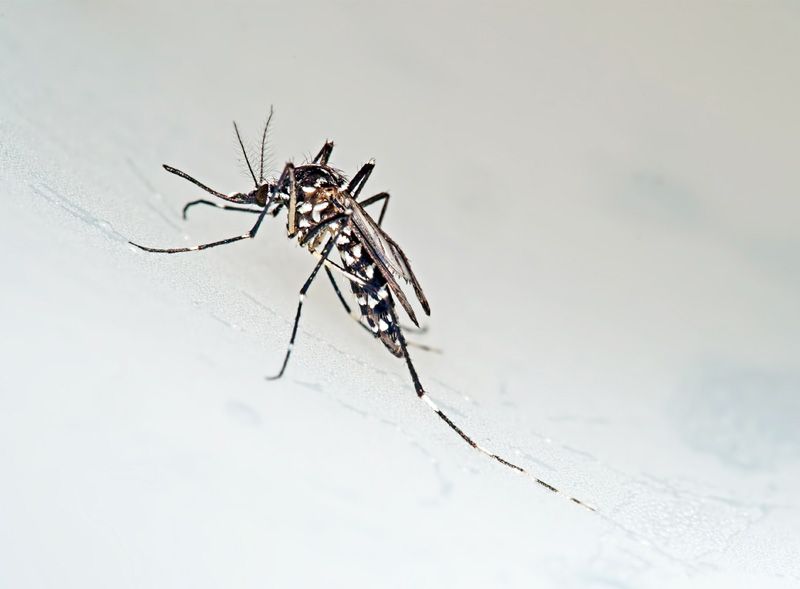
Asian Tiger Mosquito – Stegomyia albopicta
Asian Tiger Mosquito – Stegomyia albopicta
Description of Insect:
The Asian tiger mosquito (Stegomyia albopicta), also known as the forest mosquito, is a small but strikingly patterned insect native to Southeast Asia. It gets its name from its bold black-and-white striped body and legs, resembling the stripes of a tiger. Adult mosquitoes are approximately 3-10 mm in length, with a single silvery-white stripe running along the center of their thorax.
Asian tiger mosquitoes are aggressive daytime biters, with peak activity occurring during the early morning and late afternoon. Both males and females feed on nectar; however, only females require blood meals to develop their eggs.
Females lay eggs in water-filled containers, such as flowerpots, rain gutters, tires, and buckets. Their eggs can survive even in drought conditions, making them highly adaptable to thrive in urban, suburban, and rural environments.
Life cycle of Asian Tiger Mosquito
The life cycle of the Asian tiger mosquito includes four stages: egg, larva, pupa, and adult. The first three stages take place in water, while the adults are free-flying insects. Female mosquitoes lay their eggs near water bodies, in natural or artificial containers. Their eggs are highly resilient and capable of withstanding desiccation for weeks or even months until favorable conditions return.
Once submerged, the eggs hatch into larvae, sometimes known as “wigglers.” There are four larval stages, equipped with mouthparts and breathing siphons. They feed on organic matter in the water, molting through four instars over the course of 9-13 days. The larvae then develop into pupae, which is a non-feeding stage lasting almost 2 days.
After pupation, adult mosquitoes emerge and begin their reproductive cycle. Females typically lay 40-150 eggs after taking a blood meal, and their rapid development allows populations to explode under favorable conditions. This short life cycle and high reproductive rate make the Asian tiger mosquito a particularly challenging pest to control.
Damage they cause:
The Asian tiger mosquito is regarded as one of the most problematic mosquito species globally, with significant ecological, health, and economic impacts.
- Ecological Impact: Asian tiger mosquitoes compete with native mosquito species for resources, often overcrowding and displacing them in invaded areas. Their aggressive behavior and high adaptability allow them to dominate a wide range of habitats, disrupting local ecosystems.
- Health Impact:The most concerning aspect of the Asian tiger mosquito is its role as a vector of numerous pathogens. It is a primary or secondary carrier of diseases such as Dengue virus, West Nile virus, Zika virus, Chikungunya virus, Yellow fever, and Japanese encephalitis virus.
- Economic Impact: Outbreaks of mosquito-borne diseases caused by the Asian tiger mosquito place a considerable financial burden on healthcare systems. Additionally, their presence affects tourism and outdoor activities, as people try to avoid areas with high mosquito populations. Efforts to control and monitor their spread add to the economic strain.
